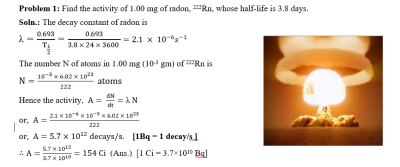Chapter 7.2 Radioactive disintegration (Radioactivity and Nuclear Physics)
The number of atoms disintegrated per second at any instant is directly proportional to the number of radioactive atoms actually present in the sample at that instant. Therefore, the rate of disintegration is governed by an exponential law. Moreover, it implies that the number of atoms that break up at any instant is not affected by environmental factors (like temperature, pressure, chemical combination, etc.)
English
Last updated
Sun, 16-Jun-2024


















